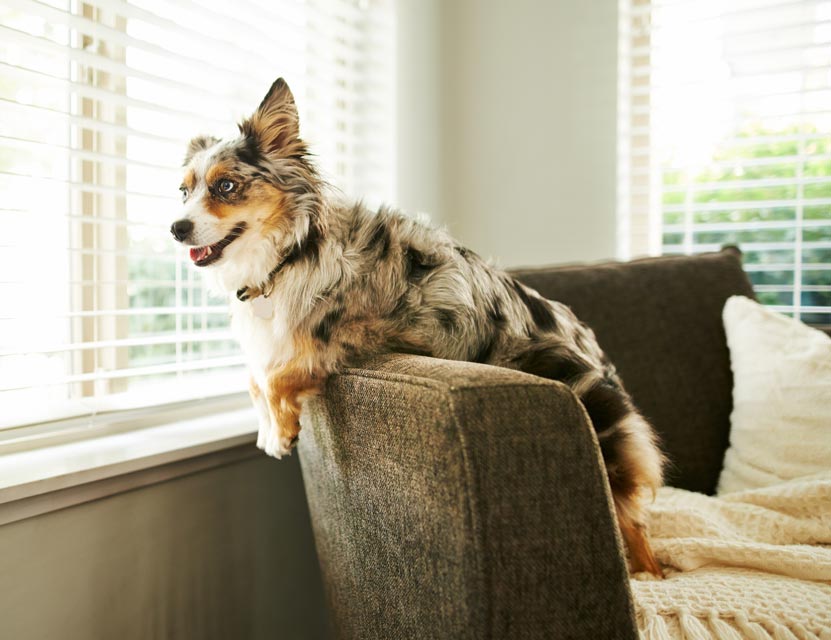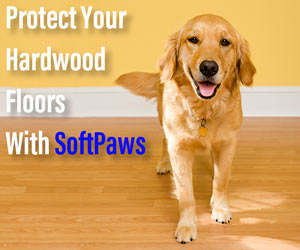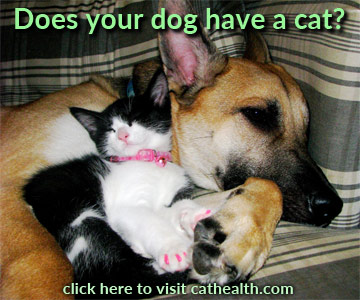Ideas for Managing Canine Separation Anxiety

Separation anxiety is a condition that can negatively impact a dog's (and their owner's) quality of life. It's fear and anxiety that occur when a dog is separated from his caretaker(s).
While there is no one cure-all for separation anxiety, there are things that you can do to manage it and help improve your dog's quality of life.
Signs of Separation Anxiety in Dogs
The signs of separation anxiety in dogs occur when the dog is alone or as he realized his caretaker is leaving and include:
- Increased vocalization, including howling, whining, and barking
- Trying to leave the home with the owner
- Destruction of items in the house, including carpet, furniture, and door frames
- Defecating or urinating in the home while alone
- Drooling
- Panting
- Pacing
Quick Tips for Managing Separation Anxiety
Here are a few ideas for helping to manage your dog's separation anxiety. You may have to implement some or all of them to see improvement, and it can take time. Be patient and adjust as you find what works for your dog.
- Decrease the drama around leaving and coming home. Don't make a big deal about leaving or returning to the house. Keep things as calm as possible while you're getting ready to go and arriving back. Choose one part of your routine to work on, such as putting on your shoes. Have your dog sit and reward him for being calm while you work on getting your shoes on. Then take them off again. You can do this with each part of your routine, gradually teaching your dog to respond calmly to those activities.
- Vary your routine and leave for short times. Once your dog can stay calm during your getting ready routine, start leaving the house just for a moment and then coming back. Don't make a big deal out of coming back. Ask your dog to stay calm by having him sit and greet you without a lot of fanfare.
- Give your dog something to keep him busy while you're gone. A puzzle toy is an excellent idea for helping to keep your dog active and calm while you're gone. Dog TV or calming music can also help.
- Work on building your dog's confidence. The idea here is to encourage your dog to have success with activities at a distance from you. Play games that require him to leave your side, like fetch, hide and seek, find the food.
- Keep your dog well-exercised. Exercise is good for mental and physical health. If you're able to spend some time in tiring interactive play before you leave the house, your dog should be able to remain calmer while you're gone.
It's essential to keep your dog safe. If his separation anxiety causes him to chew and eat dangerous items or do other unsafe things, you may need to confine him to a safe spot like a crate while you're gone.
Adaptil can help some dogs stay calmer. It's a compound that mimics a naturally occurring calming pheromone in dogs, and it comes in a spray, diffuser, and collar forms. Learn more: "How to Deal with Canine Anxiety and Fear Using Adaptil."
Some dogs benefit from anti-anxiety medications. Talk with your veterinarian to determine whether that's right for your dog.
If you're getting a new dog, you may be able to help decrease the chances of him developing separation anxiety. Learn how: "How to Prevent Separation Anxiety in Your New Dog."
You May Also Like These Articles:
How to Cope with Canine Anxiety and Fear by Using Adaptil(TM) (Formerly called D.A.P)
How to Prevent Separation Anxiety in Your New Dog
DOGTV: A Great Way to Help Dogs That Are Home Alone All Day
Disclaimer: This website is not intended to replace professional consultation, diagnosis, or treatment by a licensed veterinarian. If you require any veterinary related advice, contact your veterinarian promptly. Information at DogHealth.com is exclusively of a general reference nature. Do not disregard veterinary advice or delay treatment as a result of accessing information at this site. Just Answer is an external service not affiliated with DogHealth.com.
Notice: Ask-a-Vet is an affiliated service for those who wish to speak with a veterinary professional about their pet's specific condition. Initially, a bot will ask questions to determine the general nature of your concern. Then, you will be transferred to a human. There is a charge for the service if you choose to connect to a veterinarian. Ask-a-Vet is not manned by the staff or owners of DogHealth.com, and the advice given should not delay or replace a visit to your veterinarian.



